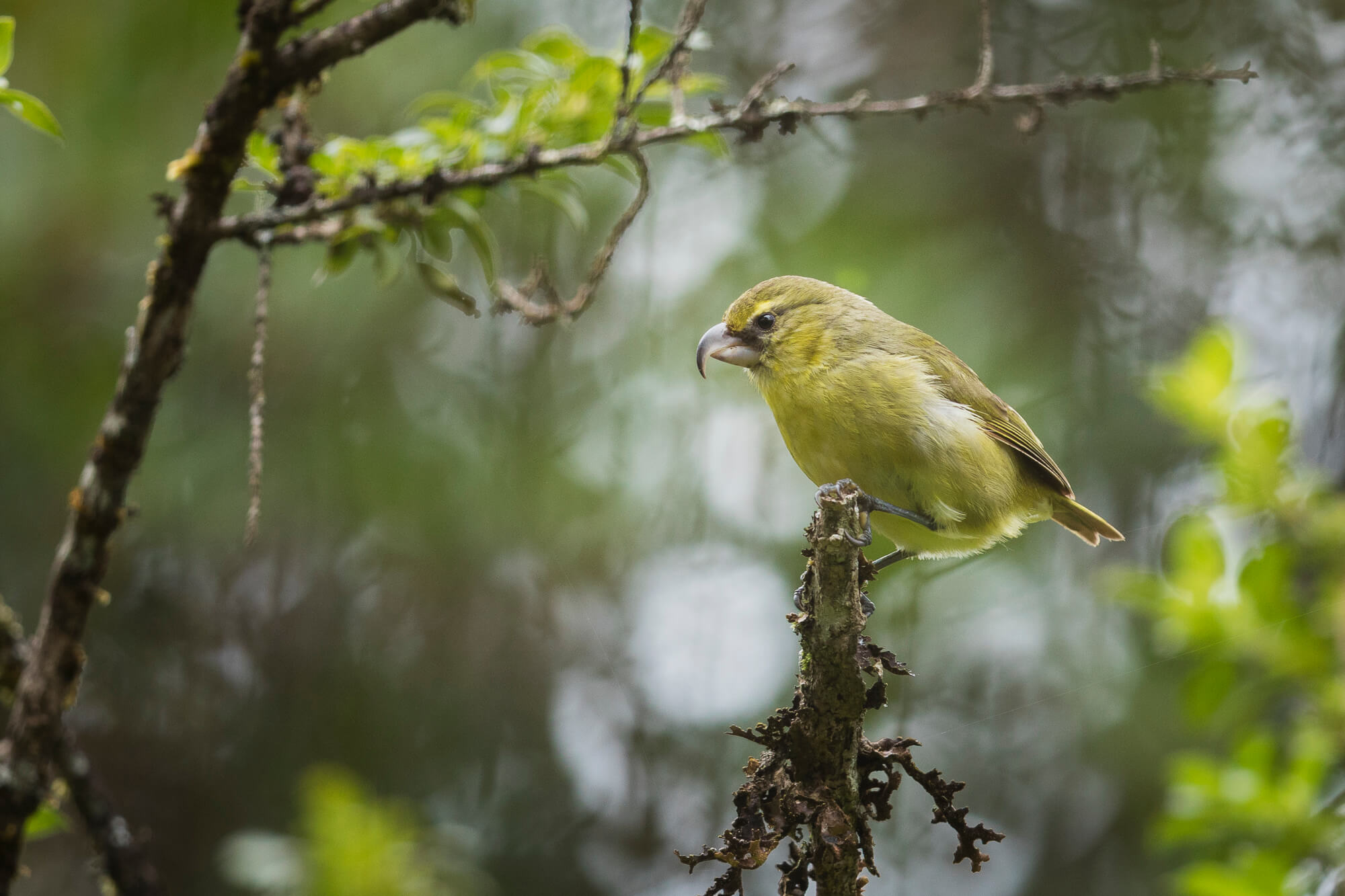
Native Birds of East Maui
Like many of the plants of Maui and the Hawaiian islands, the native birds of East Maui have adapted and evolved to co-exist in the unique and complex ecosystem of the developing islands. Here you will learn about honeycreepers and other birds that can be found in the East Maui Watershed.
Photo credit: Zack Pezillo
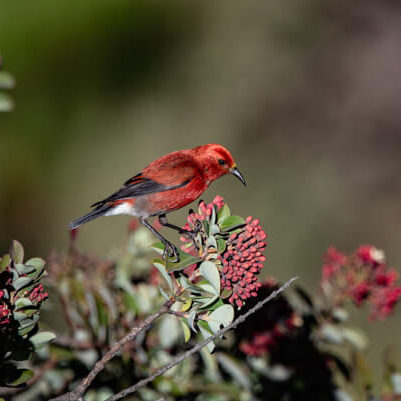
ʻApapane
The ʻApapane is one of the two red Honeycreepers found on Maui. The other one is the ʻIʻiwi. The ʻApapane can be distinguished from the ʻIʻiwi by its short, slightly curved black bill and a white crissum (the area underneath the tail feathers).
Populations of ʻApapane are locally abundant. These nectar feeders are commonly seen during interpretive hikes into Waikamoi Preserve dancing atop ʻōhia lehua blossoms.
Maui ʻAlauahio or Maui Creeper
The Maui “Creeper” is so named because of its feeding habits. It creeps along trunks, branches and twigs, flipping over bark and lichen in search of insects and grub.
The ʻAlauahio is one of the more social honeycreepers, often congregating in flocks. It is very similar in appearance to the Hawaiian ʻAmakihi. One can tell them apart by their bills – the ʻAlauahio has a shorter, straighter bill. Males are bright yellow, with females and juveniles a duller yellow.
Populations of Maui ʻAlauahio are locally abundant.
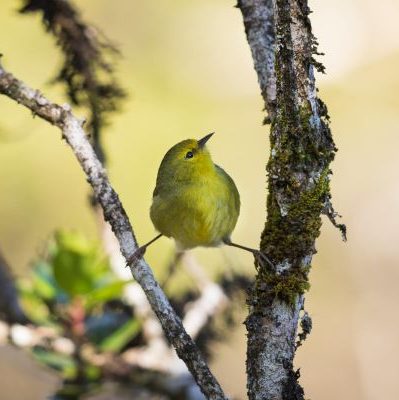
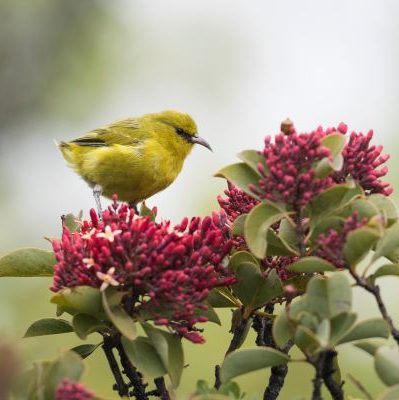
Hawaiian ʻAmakihi
This species is found from Molokaʻi to the Big Island, while Oʻahu and Kauaʻi have their own distinct species. The Hawaiian ʻAmakihi can be distinguished from the other yellow honeycreeper on Maui, the Maui ʻAlauahio, by its slightly longer, more curved bill, and by a black streaked lore (the area between the base of the bill and the eye).
Like all Honeycreepers, the Hawaiian ʻAmakihi takes nectar from the flowers of the forest. Populations of Hawaiian ʻAmakihi in the upper forested watersheds of East Maui are locally abundant.
ʻIʻiwi
Threatened
These bright scarlet birds are a common sight in the upper elevation forests of East Maui Watershed. They are easily recognized by a long curved orange bill that has co-evolved with tubular flowers like the native mints and lobelias. Populations of ‘I’iwi are locally abundant.
This one is feeding from ʻakala flowers. ʻAkala is a native Hawaiian raspberry whose bright red and juicy fruits are used traditionally to make dyes for kapa cloth.
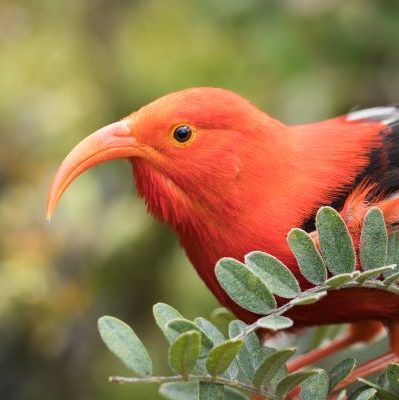
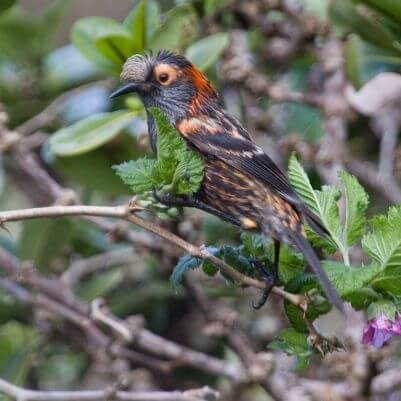
ʻAkohekohe
Endangered
Populations of ʻAkohekohe, or Crested Honeycreeper are estimated at 1200 individuals, found only in East Maui Watershed. A few of these birds have been sighted in the Waikamoi Preserve during interpretive hikes.
ʻAkohekohe is the more aggressive Honeycreeper, actively defending its territory – an ʻōhia lehua tree in full bloom or a nest site.
Kiwikiu or Maui Parrotbill
Critically Endangered
The Maui Parrotbill is named not because it is a relative of parrots, but because of its strong, parrot-like bill. The thick neck muscles of this unique and rare honeycreeper allow the bird to use its bill like a can opener, prying open twigs, small branches and other plant material in search of insects and grubs.
Found only in the East Maui Watershed, the population of Maui Parrotbills is estimated at around 150 individuals. A few individuals have been cited during interpretive hikes in Waikamoi Preserve. Efforts to repopulate upper leeward slopes in the Nakula Area Reserve are being considered.

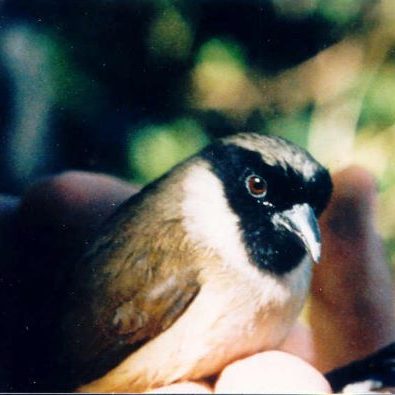
Poʻouli
Extinct
The po’ouli was first discovered in 1973 by University of Hawaii students in the wet montane forest of the East Maui Watershed. Fossil evidence shows that these birds once inhabited the drier leeward side of Haleakalā. Poʻouli are cryptic birds with quiet songs and calls.
Though the numbers of Poʻouli on Maui have not been high (some scientists estimated about 140 in the early 1980s) the population has been in steady decline since its discovery. Surveys in 1994-1995 discovered 6 Po’ouli at 4 locations. Surveys from 1997 to the present have shown only 3 birds at three separate locations. These remaining 3 birds were color banded and released in 1997-1998.
In 2001-2002 efforts to capture and translocate a female Poʻouli to a male Poʻouli’s homerange were successfully carried out by the Maui Forest Bird Recovery Project. Although the translocated Poʻouli flew back home the following day, researchers garnered valuable information, enabling them to formulate a plan for captive breeding.
On September 9, 2004 one of the Poʻouli was captured and brought to the Maui Bird Conservation Center for captive breeding. Sadly, this individual died from malaria on November 26, 2004. The two remaining Poʻouli, believed to be a male and a female, have not been observed since.
Maui Nuku Pu’u
Extinct
This moderately sized honeycreeer is distinct in its extraordinary thin, curved bill. Endemic to Maui the last confirmed sighting was in 1998. It lived mostly in high elevation mesic to wet forests containing ʻōhiʻa and koa trees. There were two other subspecies known to exists on Oahu and Kauai.
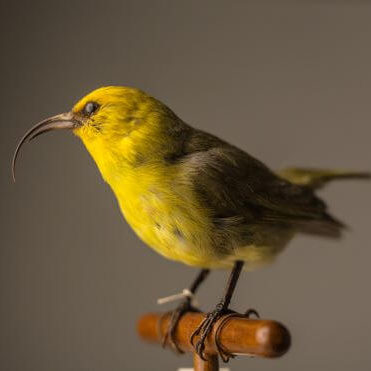
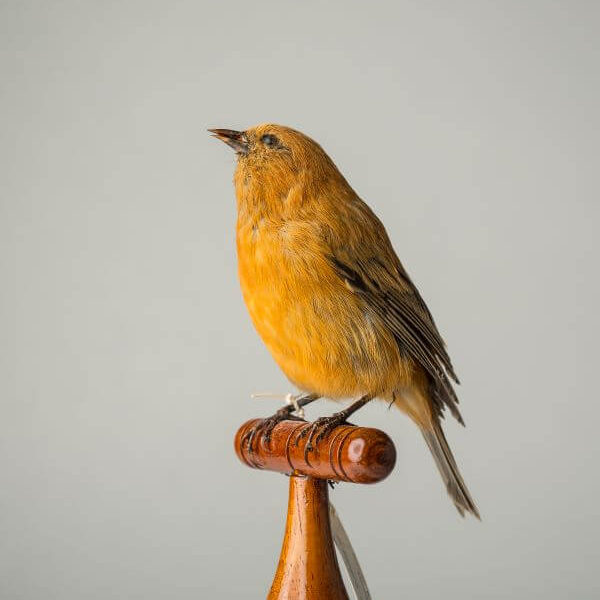
Maui ʻĀkepa
Extinct
The Maui ʻākepa is a small insectivore endemic to Maui. The last sighting confirmed sighting was in 1988. The islands of ʻOahu and Hawaiʻi also have their own species of ʻākepa. These birds were last observed in the wet forests containing ʻōhiʻa.
OTHER NATIVE BIRDS
Pueo
The pueo iis a Hawaiian subspecies of the short eared owl. Unlike most owls they are commonly active during the day. They can live in a variety of habitats including wet and dry forests, but are most common in open habitats like grasslands and shrublands. Males perform active aerial displays known as sky dancing to attract prospective females.
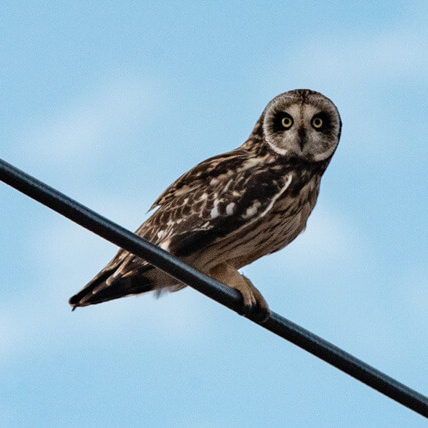
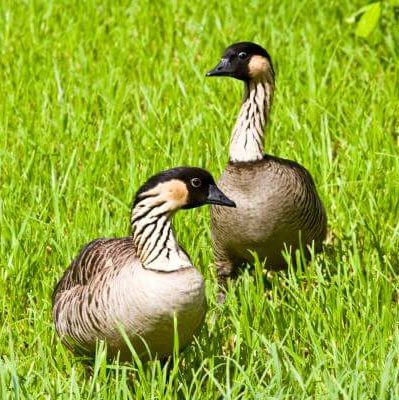
Nēnē
Endangered
The nēnē goose is the Hawaiian state bird. It’s ancestor is the Canada Goose, a common waterfowl of North America. The nene have adapted to the dry rocky terrain of the Hawaiian islands by decreasing the webbing on their feet.
Unlike many of the waterfowl that populated Hawaiʻi before the arrival of humans, the nene retained their ability to fly, thus helping them evade predators once humans and their imported mammals settled on the islands. Today, one can find populations of nene on Maui at Haleakalā National Park.
ʻAʻo or Newellʻs Shearwater
Threatened
Although this birds spend the majority of their time over the open ocean, they colonize and nest on steep mountain slopes in East Maui.


ʻUaʻu of Hawaiian Petrel
Endangered
Named after its vocalizations (an eerie oooh-ah-oooh) these birds make their nests underground in the form of burrows. When not nesting, these birds spend their lives over the ocean. The largest population of ʻUaʻu in Hawaii can be found in Haleakalā Crater. Even here, these birds are vulnerable to predation in burrows by the introduced species of mongooses, rats and feral cats.
MIGRATORY BIRDS
Kolea or Pacific Golden Plover
The Kolea nest in Alaska and migrate to the Hawaiian islands during the winter months, though some populations of Kolea have established themselves on the islands year-round. These birds are commonly found in open grassy areas. Their plumage varies from drab under parts and brown upper parts of brown speckled with gold as pictured here to a bold black front edged with white, this second version is the Kolea’s breeding plumage.

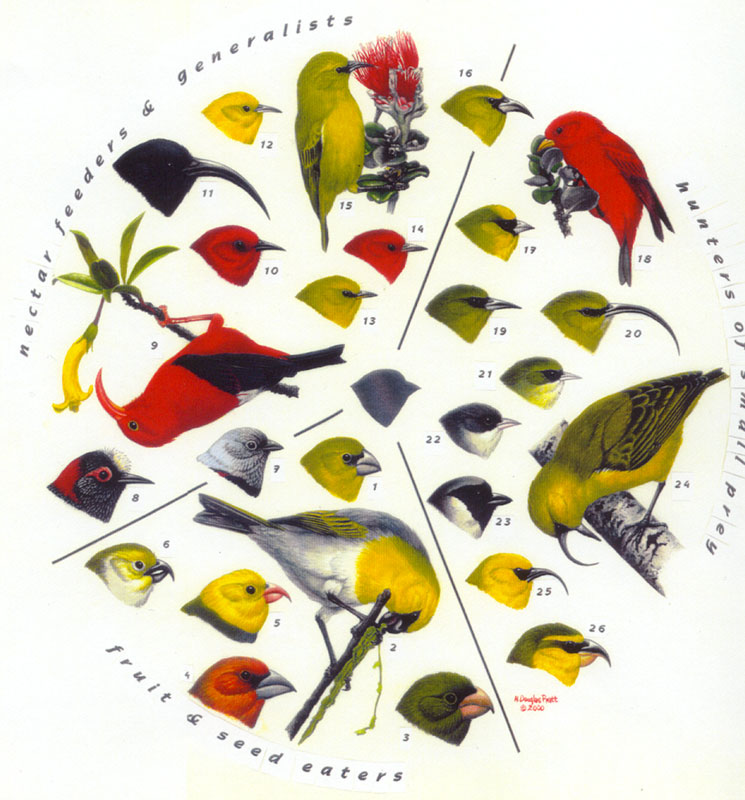
Honeycreepers
Millions of years ago, after the eruptions of volcanoes formed land masses in the middle of the Pacific ocean, different species of birds, plants and insects too! found their way to these new islands by one of three ways: wings, waves, or wind.
Scientists believe that all of East Maui’s forest songbirds (passerines) had evolved from an unknown finch-like species. These birds are collectively called honeycreepers.
Over the years, the birds adapted to their new environment, along with the other birds, plants and insects to become what they are today – a diverse group of anatomically different songbirds that inhabit the forests of East Maui.
However, threats to the watershed have diminished the numbers of these birds drastically, sometimes causing extinction. The chances of seeing a Hawaiian honeycreeper among human habitation are slim to none. The Poʻouli, pictured below, is fighting extinction as we speak. As of 2004 individuals left were brought into captivity for breeding purposes in hopes to reestablish a breeding population.
The Maui Forest Bird Recovery Project(MFBRP) is an organization that works specifically with the protection and research of native honeycreepers in the Hanawi Natural Area Reserve, a section of pristine rainforest within the East Maui Watershed. All of the honeycreeper photos below are courtesy of MFBRP.






